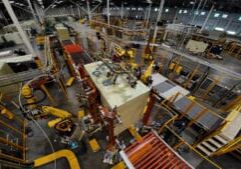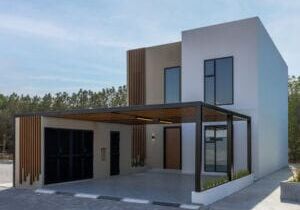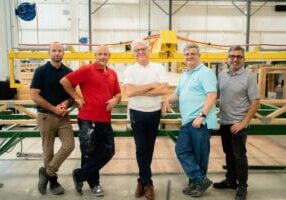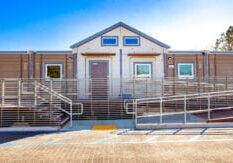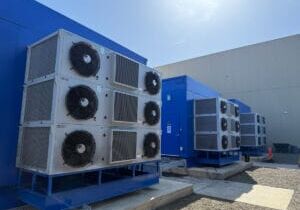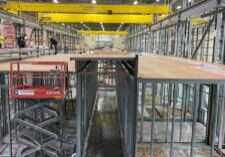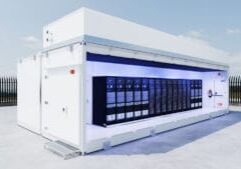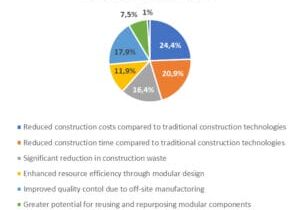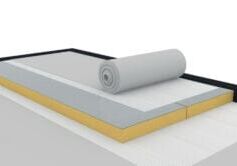Relocatable Buildings vs. Permanent Modular Construction: What's the Difference?
Modular construction is revolutionizing the construction industry as a super-efficient and sustainable solution for building faster, stronger, and more predictably.
There are two types of modular structures- Relocatable Buildings and Permanent Modular Construction. While both construction types offer a plethora of benefits, there are distinct differences.
In this article, we'll help you understand the differences between permanent modular construction and relocatable buildings.

This hospital in New York is an MBI Awards of Distinction-winning example of permanent modular construction.
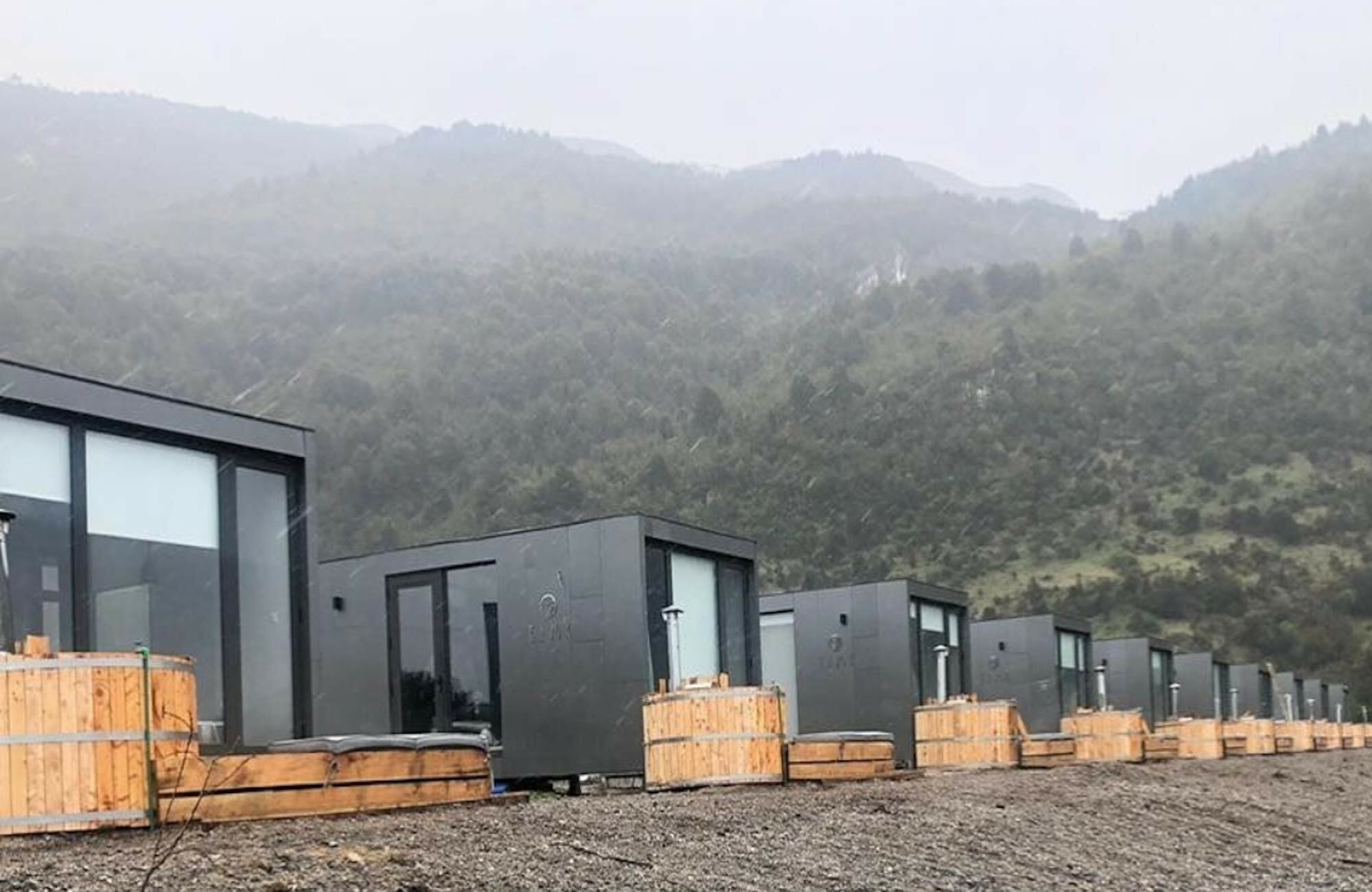
These luxury cabins are an MBI Awards of Distinction-winning example of relocatable buildings.
What is Modular Construction?
Also known as volumetric construction, modular construction uses individual sections or modules, which are assembled off-site in factories under controlled conditions, to create complete structures of all shapes and sizes.
The modules themselves use the same designs and materials as traditional construction and meet all the same building standards and codes. The modules are then transported and put together at the final construction site.
There are two main methods of modular construction:
Permanent Modular Construction (PMC)
PMC is a sustainable and innovative building technique that utilizes offsite and lean manufacturing methods to prefabricate either single or multi-story structures in modular sections. PMC can be integrated into an existing structure or can be built to stand independently. The modules can then be completed with MEP interior finishes, fixtures, and appliances. The Hawaii Film Studio, for example, used PMC to meet strict timeline and budget requirements. Other examples of permanent modular construction include healthcare facilities, hotels, schools, and restaurants.
Relocatable Buildings
Also known as portable buildings, RBs are partially or completely constructed structures that also abide by set building codes and are assembled in a controlled manufacturing facility through the modular construction process.
Relocatable buildings are made to be repurposed and transported to various building sites. They can be used for medical clinics, schools, sales centers, and construction sites, among others.
The Differences Between Relocatable and Permanent Modular
1. Duration Of Use
Permanent modular structures are fabricated and installed for long-term use. They are designed to be durable, just like conventional buildings, and can last just as long (or longer) than traditionally-constructed buildings.
Relocatable buildings, on the other hand, are installed for a shorter intended duration; a few months or a year, for instance. They are also designed durable enough to withstand several relocations and installations.
2. Types of Materials Used
Because permanent modular structures are intended for longer use, they are typically constructed with wood, steel, and/or concrete. Relocatable buildings, on the other hand, are usually made of wood to make them lightweight and easier to transport and reinstall.
3. Building Purpose
Permanent modular buildings are designed to remain in one location for an extended period of time.
Temporary modular buildings are ideal for situations that demand quick construction and future relocation and repurposing. They are mostly built to offer temporary housing such as, construction sites, or mobile showrooms, as well as for some commercial purposes.
4. Architecture
When it comes to architecture options, temporary modular structures offer less design and layout choices. They also offer fewer options for customization.
Though the architect's plans for PMC must be settled well before construction begins, permanent modular buildings offer nearly endless options. From the addition of lobbies to elevators and stairwells, these structures offer construction engineers and consumers alike countless design possibilities.
5. Construction Duration
While the duration of construction will depend on the scope of work, relocatable buildings have the potential to be on-site and ready to use within weeks.
On the other hand, permanent modular buildings may take months or more to construct and assemble on-site based on the structure's size and design. Despite the differences between the two types of modular construction, both types offer owners many benefits. The benefits include: less material waste, faster completion of projects because of indoor construction, safer construction, and a quicker return on investment. For a complete list of the Modular Building Institute's PMC and RB manufacturers, click here.
More from Modular Advantage
Resia: Breaking All the Rules
Resia Manufacturing, a division of U.S.-based Resia, is now offering prefabricated bathroom and kitchen components to industry partners. Its hybrid fabrication facility produces more precise bathroom and kitchen components (modules) faster and at lower cost than traditional construction. Here’s how Resia Manufacturing does it.
How LINQ Modular Innovates to Bring Modular To The Market in the UAE and Beyond
LINQ Modular, with an office and three manufacturing facilities in Dubai, is a modular firm based in United Arab Emirates. The company is on a mission: to break open the housing and construction markets in the Gulf Cooperation Council (GCC) area with modular.
ModMax: Redefining Modular Construction with Confidence and Precision
ModMax was born out of frustration—frustration with five persistent pain points in modular construction: Permitting bottlenecks. Production delays. Rigid designs. Disconnect between “the office” and the field. Lack of transparency and communication.
LifeArk: Disaster-Resilient Housing from Recycled Plastic and 100-year-old Technology
Wee compares LifeArk’s housing units to Yeti coolers, as they are built similarly. Each component takes 15 to 20 minutes to manufacture, has an R-value of 40, and includes molded slots and chases for wiring, plumbing, fire sprinklers, and other utilities.
Building the Future of Modular Edge Infrastructure
The edge data center market is expanding rapidly, driven by the surge in AI workloads, IoT adoption, and the need for localized compute power. In these environments, sustainability, scalability, and reliability are non-negotiable. Cooling is among the most complex challenges for operators—and one of the most decisive factors in long-term success.
Accelerating Light-Gauge Steel Construction: A Semi-Automated Digital Workflow for Off-Site Projects
For construction professionals, the message is clear. By adopting semi-automation and digitalization, companies can deliver projects faster, more accurately, and more profitably, while also building stronger collaboration across teams. The approach is not about replacing people with machines, but about empowering people with better tools and processes.
Why Modular Data Centers Are Gaining Momentum
Artificial intelligence, high-performance computing, and edge applications push the limits of traditional “stick-built” data centers. They take years build, often struggle with high density workloads, and aren’t optimized for deployments near end users. Modular data center platforms are purpose-built to address these challenges, offering flexibility and scalability to adapt to evolving technologies, while opening new opportunities for the modular construction industry.
Supply Chain Innovation in Action: 5 Habits Every Modular Leader Should Practice
By applying these principles to supply chain practices — collaborative planning, strategic procurement, scenario modeling, digital tools, and transparent forecasting — construction leaders can build value chains that are not just efficient and agile, but truly innovative.
Exploring the Role of Modular Integrated Construction (MiC) in Advancing Circular City Principles – A Survey of Stakeholder Perspectives
The survey findings highlight the significant potential of Modular integrated Construction (MiC) in advancing the development of circular cities. By reducing costs, accelerating construction timelines, and minimizing waste generation, MiC offers a promising approach to sustainable urban development.
The Use of MS POLYMER™-Based Sealants and Adhesives in Modular Building
These products combine flexibility and elastic recovery with excellent adhesion to different substrates and have already shown their usefulness in traditional construction. Now it’s time for them to be put to use in the modular construction industry.

